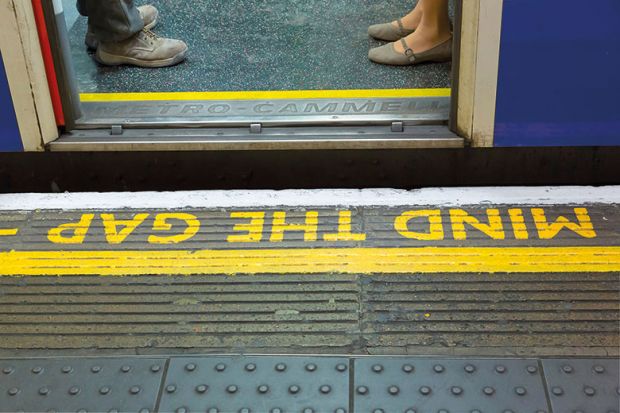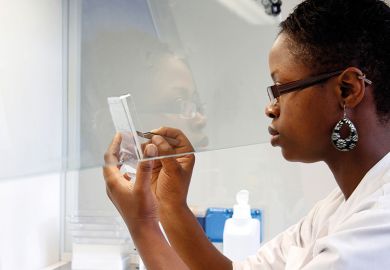The lack of role models from different ethnic minority backgrounds and teaching practices are the main contributing factors to the higher education attainment gap between white and black, Asian and minority ethnic (BAME) students, according to a survey of UK university staff.
A Universities UK survey completed by 44 staff at 39 UK universities found that lack of higher education role models representing all ethnic groups was seen as the main contributing factor to the attainment gap (87 per cent), followed by curriculum delivery (82 per cent) and lack of diversity of ethnicity of senior staff (79 per cent). Curriculum design was cited by 77 per cent of respondents.
Meanwhile, more than half (52 per cent) of university staff said “confusion about targeting students” was a barrier to closing the ethnicity attainment gap.
A similar survey distributed by the National Union of Students and completed by 69 students from 35 institutions found that students held similar views on the main reason for the attainment gap, with more than three-quarters (78 per cent) citing lack of diverse senior leaders as the main factor.
However, students were less likely than staff to attribute the gap to curriculum delivery (49 per cent) and more likely to highlight the lower socio-economic background of BAME students (75 per cent) and institutional culture and leadership (72 per cent) as significant reasons.
Just 7 per cent of student respondents said their institution discusses the attainment gap with students. Of the 31 per cent of respondents who had raised the issue with their university, fewer than half (14 per cent) felt that it had resulted in action.
The survey results are highlighted in a joint report from UUK and the NUS, which provides recommendations on how the attainment gap can be tackled. The report is based on contributions from 99 universities and student unions and six regional roundtable evidence sessions with 160 attendees between June and December 2018.
The gap between the likelihood of white students and those with BAME backgrounds getting a first- or upper-second-class degree was 13 per cent among students graduating in 2017-18, according to the report.
Meanwhile, data from the Office for Students show that just 16 UK universities have set a specific target to remove the BAME attainment gap, the study adds.
The report also highlights the “fear, unease and defensive reaction of some when asked to talk openly about race and the BAME attainment gap”.
“If conversations that are specifically about race, racism and ethnicity are avoided, though, there is a risk that deficit understandings of students will be perpetuated, as opposed to challenging the structures and practices that underpin the attainment gap,” it states.
The report includes five steps for universities to improve BAME student outcomes: providing strong leadership; having conversations about race and changing cultures; developing racially diverse and inclusive environments; analysing data on the attainment gap; and using applied research to understand which strategies work.
Baroness Amos, director of SOAS University of London and one of the leaders of the UUK and NUS initiative to tackle the BAME attainment gap, highlighted the “importance of having a whole of organisation approach” to tackling the issue.
She added that it was important that institutions do not use “the deficit model” – an approach that promotes the idea that BAME students lack certain skills, aspirations or motivations.
“What the deficit model does is focus on the attributes and characteristics of the student as the main contributing factor for attainment differential. It assumes the challenge is the student, not the institution,” she told Times Higher Education.
Speaking at an OfS event on fairer access and participation on 1 May, Lady Amos added that 93 vice-chancellors have already signed up to a commitment to put in place the report recommendations.
The OfS has set a target for the higher education sector to eliminate the gap in degree outcomes between white and black students by 2024-25.
Register to continue
Why register?
- Registration is free and only takes a moment
- Once registered, you can read 3 articles a month
- Sign up for our newsletter
Subscribe
Or subscribe for unlimited access to:
- Unlimited access to news, views, insights & reviews
- Digital editions
- Digital access to THE’s university and college rankings analysis
Already registered or a current subscriber? Login








